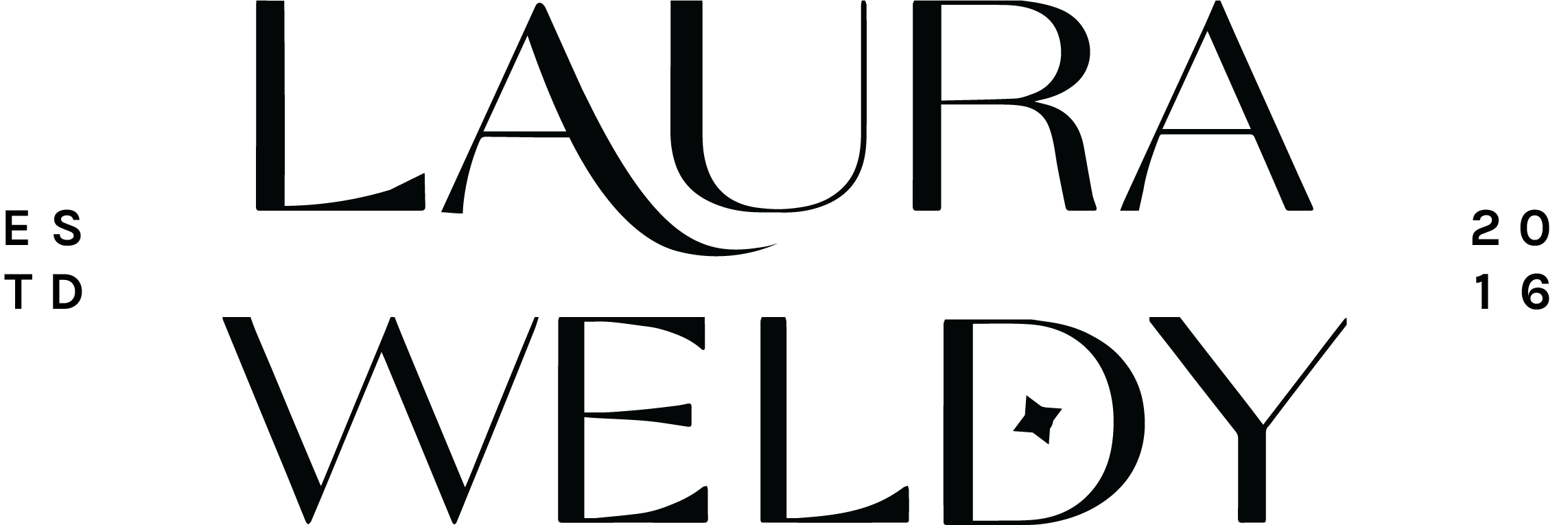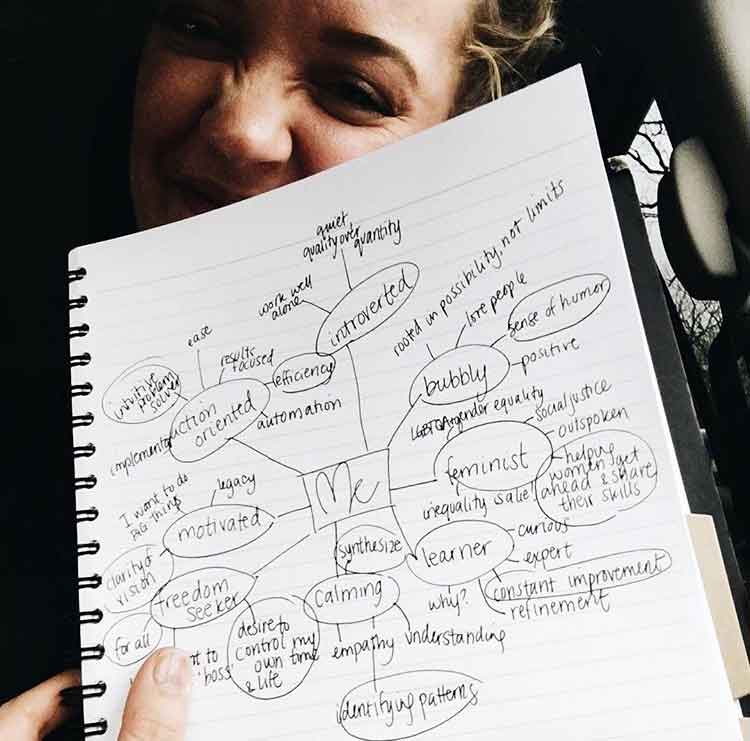Have you heard of the term mind mapping before? I only learned about it within the last year, and it has seriously changed the way I run my life and business.
If you’re anything like me, you’re a visual learner. While I love to read about and discuss major concepts, I find that the best way for me to absorb information and to take action upon it is by putting a pen to paper. Something about the act of sketching out my process helps me to wrap my brain around it and conceive the actionable steps that will make it happen. That’s why I love this process in connection to one of the (potentially) murkiest subjects of them all: your life’s purpose.
There’s no way around this: discovering your passion or purpose in life is a process. At times, it can be incredibly frustrating, because we’re used to being given answers our whole life. For many of us, the introspection and intuition that are required in the process of determining your life’s purpose are weak muscles we haven’t worked on in a number of years. Unfortunately, you can’t just Google your question and get an answer. The obvious (and still frustrating) truth is that nobody else can tell you your life’s purpose; it’s something you have to determine for yourself.
Are you pulling out your hair yet? Pouring yourself another glass of wine and swearing because you don’t know yourself the way you wish you did? Relax, and consider giving the mind mapping method a try.
The concept of mind mapping is simple: it’s a visual tool to organize your related thoughts into some kind of flow that makes sense. It’s less of a to do list, and more of a painting. What the hell do I mean by that? A well designed mind map will convey an element of understanding, and relies upon the interpretation of the viewer. That’s why my mind map may not always make sense to you! It’s another reason the tool is so perfect to use when trying to discover your purpose, because only you need to understand it.
Let me get a little woo woo on you here, and connect the mind mapping process with the Law of Attraction. When we put things down on paper, we’re creating some sense of clarity and permanence that we didn’t have before. We’re declaring to the universe that THIS is what we intend, and THIS is how we will make it happen. There’s power in the declaration stage alone!
Of course, putting it on paper also gives us a sense of relief, by freeing up some of our already overloaded mental space. It’s like closing down the tabs on your laptop: suddenly everything moves more quickly and efficiently. As powerful as they are, sometimes words and sentences and grammar just doesn’t cut it. There are elements of the human experience that are difficult to express within our traditional language confines. Things like passion, purpose, drive, ethics, morality, and power are all intangible and yet valuable, and for some reason visual tools can help us express those things in ways that words sometimes cannot.
There’s no right or wrong way to make a mind map, but I want to share a few of my own tips below. I’m even sharing a quick peek at one of my own hand drawn map below for you to gain some inspiration!
If you’re looking to give this a shot digitally, I recommend MindMeister – it’s free and simple! Here are a few guidelines, whether you’re using paper or a digital program to create your mind map.
- Start broad. The idea here is to encapsulate big ideas and illustrate how they’re connected. You can always break things down into more detailed mind maps if you need! For example, instead of creating a mind map for “what I need to do tomorrow,” I recommend starting with a mind map on your priorities. Get it all out of your brain and onto your map, and then work through the details in their own maps if you so desire!
- For a mind map related to your life’s purpose, don’t worry too much about it being a final draft. Too often this fear keeps us from even beginning the exploration process. Everything is flexible and open to another draft!
- Use a big piece of paper, and leave room to add on as new things come to you. If you’re struggling with where to start, place yourself at the center of the map, and fill your initial bubbles with traits of your personality. Branch off from those to give specific examples for how you show up in that way throughout your life. Start to notice patterns, trends, and examples that make you feel good. Follow that bunny trail and see what comes up!
- Reflect as you map. Think critically about the most concise and clear way to represent your thought, task or element. As you’re adding it to your mind map, consider how it impacts you. Notice any changes you experience as you work on that element – do you feel uptight when working on that pieces of your mind map, and more relaxed as you work in this space? Feelings are always a major sign from the universe that you’re either on the right track or veering off, so we should always try to understand them.
- Get inspired, but don’t compare. For the same reason that seeing highly organized closets gives me a secret and weird thrill, I love to google mind maps. It’s fun to get inspired by the amazing clarity other folks are creating with this visual medium, but don’t worry if your mind maps in the beginning aren’t as clear. It’s a skill, and yours will improve with time. Besides, it doesn’t really matter how pretty your mind map is, as long as it is giving you the understanding and clarity you crave.
Have you tried mind mapping yet? I’d love to hear your biggest takeaways and what you learned about your potential next step in life using this format. Post a picture of your mind map on Instagram and tag me!



